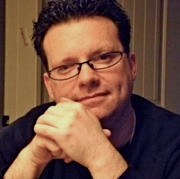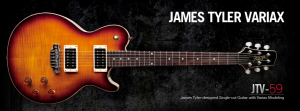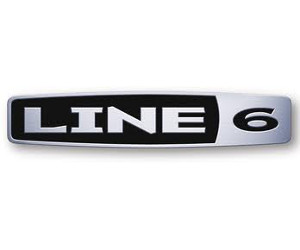Minds Behind the Gear…Max Gutnik – Line 6 VP of Product Management
CALABASAS, CA: Music artists constantly strive for balance between the studio and stage. The manufacturers that work to equip them, however, often have a tougher time excelling in both venues.
One company that’s been able to make it work across the board is Line 6, which started by equipping performing guitarists – and more than a few studios – with effective DSP models of amps and effects. Starting with the AxSys 212 and amp modeling amplifiers in the mid-90’s, their brand continued to expand and encompass pedal-based and rackmount tone tools.
Today, the Line 6 portfolio is about not just bridging worlds, but creating integrated systems for artists and audio professionals. More recent launches include the flexibly connectable StageScape M20d digital mixer and StageSource speakers for the live side, while the James Tyler Variax guitar and POD HD 500 system form a formidable – and easily portable – creative pairing for session guitarists and recording studios.
With NAMM about to unleash a load of new stuff for everyone to get their hands on, we sought an inside look at how new solutions come together. Max Gutnik, VP of Product Management at Line 6, weighed in on how his team approaches musical instrument and audio gear evolution.
What is your role and what are your primary responsibilities at Line 6?
I run the product management group at Line 6. Product Management’s role is to take our customers’ input and translate that into innovative products and solutions that help them realize their creative vision.
Line 6 customers run the gamut from the aspiring musician to the professional, from studio owners to people who need portable, powerful live sound production. So our solutions range from individual products to integrated systems.
In essence, we identify problems and opportunities to do things better, and design cool products that make making music better for our customers.
What do you like about Line 6 — what are they doing right, and why is it a good match for your talents?
At Line 6, innovation is in the DNA of the company. The Line 6 culture is constantly and organically thinking about how to change the world.
That kind of thinking aligns with my personal philosophy and passion: There’s a lot of symmetry between the way I personally want to make an impact, and how Line 6 makes an impact.
Can you tell us about the products you’re working on, and what you expect to be developing in the future?
We are constantly developing newer, better and faster ways to serve our customers’ needs. We’re uniquely positioned to develop products and solutions that address our customers’ problems—as well as integrated ecosystems that solve bigger, more substantial challenges.
When we talk about solving problems, we’re not just talking about the guitarist with the POD, or the person who needs a live sound solution. We’re also talking about the guitar player with a POD who wants to record more easily, or the band that wants to run live sound from the stage, or the musician who wants to make his cartage less burdensome when he’s flying to a gig without compromising sound quality.
For example, using a single James Tyler Variax to replace a bunch of guitars when traveling is a big deal for pros that need versatility and great tone. We consider how a solution helps develop the entire ecosystem, so we’re not targeting just one workflow but our customers’ entire creative process. And having that kind of positive impact on your customers’ creativity is what drives us.
What you think are the primary wants/needs of consumers in the pro audio and MI space currently?
First and foremost, customers want amazing-sounding gear. And that’s another thing I really like about working for Line 6—we make great-sounding products!
Our customers tell us they want products that allow them to unleash their creativity with as little tech fatigue or friction as possible, yet they don’t want simplicity to compromise sound quality. That balance is at the heart of what we do.
Last question: What does the landscape look like right now to you in terms of product development in the audio industry — why would you say this is a particularly interesting time to be creating new tools for musicians and audio pros?
Products are far more accessible today. There aren’t so many dogmatic beliefs around what solutions have to look like or where they have to come from to be accepted.
In the old days, there were certain things that a guitar player or a sound engineer had to own, and there were specific ways they had to work. Now, with the way the industry is changing so rapidly, customers are searching out solutions that solve old problems in new ways.
This emerging culture embraces non-traditional solutions. For instance, the Line 6 StageScape M20d mixer explodes the traditional “mixer with channel strips and a rack of outboard gear” paradigm – it’s specifically designed to be a smarter, faster way for musicians to get great live sound, but it doesn’t look or work like anything else on the market. It actually pushes the envelope and presents ingenious solutions to multiple problems in a completely fresh way.
And that’s exciting because musicians can then truly innovate themselves, without feeling trapped by form factor. Which is what this is all about, isn’t it?
— David Weiss
Please note: When you buy products through links on this page, we may earn an affiliate commission.










Bryn85
March 2, 2013 at 11:06 pm (11 years ago)The same group that ruined Avid are now ruining Line 6. Clueless corporate management talking about ecosystems and paradigm while the product quality has completey gone to @$%#